How do you create gorgeous urban landscape photography?
In this article, I’m going to take you through everything you need to know about urban landscapes.

And by the time you’ve finished, you’ll be able to capture stunning urban landscape photos consistently.
Let’s get started.
What is Urban Landscape Photography?
Urban landscape photography is a genre of photographic art that combines the techniques and principles borrowed from traditional landscape photography and applies them to the dynamic and diverse cityscapes of urban areas. In this approach, the photographer strives to capture the essence of urban environments while maintaining a connection to the natural world that may exist within or around the city.
Urban landscape photography is a convergence of several genres of photography, including:
- Street photography
- Architectural photography
- Landscape photography
A key hallmark of urban landscape photography is its inclusion of some natural elements amidst the urban backdrop. These natural elements can encompass the vast expanse of the sky, the lush greenery of parks and trees, or the reflective allure of waterfronts. This integration of nature within the urban realm serves to evoke a sense of balance, contrast, and harmony that is both visually captivating and conceptually significant.
The visual interplay between the natural and urban elements within the composition is at the heart of urban landscape photography. It is a deliberate exploration of the juxtaposition or symbiosis of these contrasting worlds.
The photographer seeks to create images that showcase the harmonious coexistence of man-made structures, streets, and cityscapes with the organic, unspoiled beauty of the natural world. This contrast or symbiosis can convey powerful messages about the cohabitation of urban life and nature, highlighting the unique character and charm of each location.
And as a photographer who lived all my adult life in major metropolitan areas of different countries, urban landscapes are a big part of my photography and very close to my heart.
Today, I am going to share how I approach urban landscape photography, and I am hoping it will help you appreciate it as I do.

Urban Landscape Photography Tips
Now let’s take a look at some tips so that you can capture beautiful urban landscapes.
1. Shoot During Golden Hour
If you want to capture compelling urban landscape photography, then you must pay attention to the light.
And the light rarely gets better than golden hour, when the sun is low in the sky and casts a beautiful warm glow across the scene.
You’ll find golden hour lighting early in the morning and late in the afternoon (though the particulars will depend on your location; see our recent article on the best time to take photos outside).
Note that you can do all sorts of interesting experimentation with golden hour. For instance, you can shoot sidelit buildings for adding three dimensionality. Or you can photograph backlit buildings for interesting silhouettes.
Basically, if the light is golden, then it’s tough to go wrong!
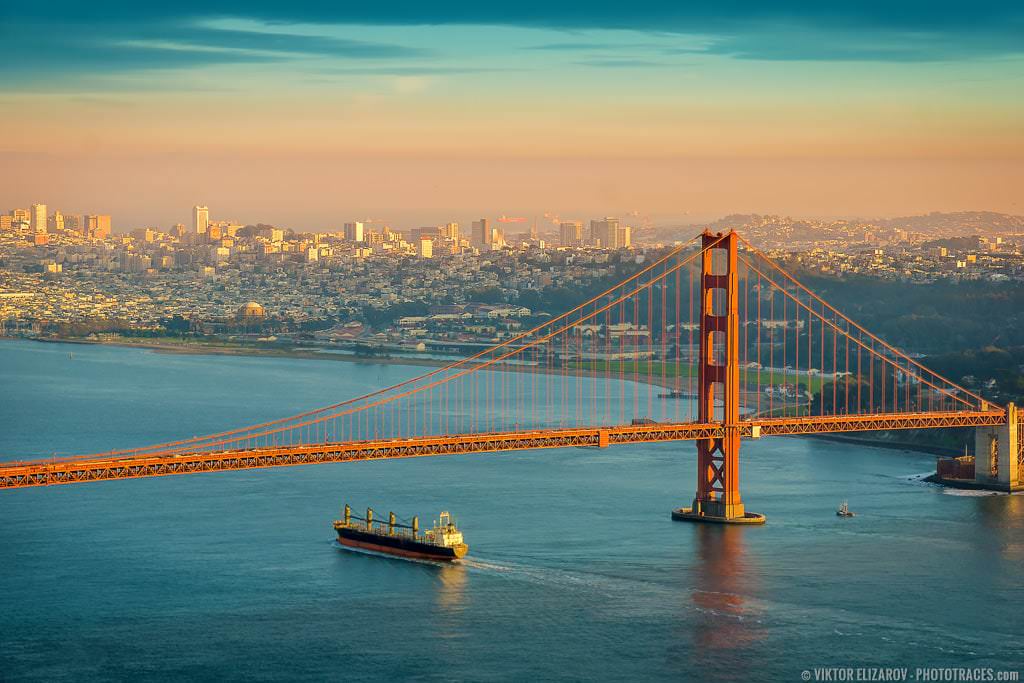

2. Shoot During the Blue Hour
The “blue hour” is a mesmerizing period that occurs just after sunset and before complete darkness sets in, as elaborated in our previous article on ideal photography times.
During this time, the natural light is exceptionally soft and gentle, creating an almost otherworldly ambiance. This unique lighting quality can yield stunning and ethereal photographs that stand out in urban landscape photography.
Urban areas, in particular, transform during the blue hour due to the abundant presence of artificial lighting.
Streets, buildings, and landmarks come alive with a warm, inviting glow, while the darkening sky provides a stunning backdrop. This interplay between the natural fading light and the emerging urban radiance presents urban photographers with a plethora of creative opportunities.
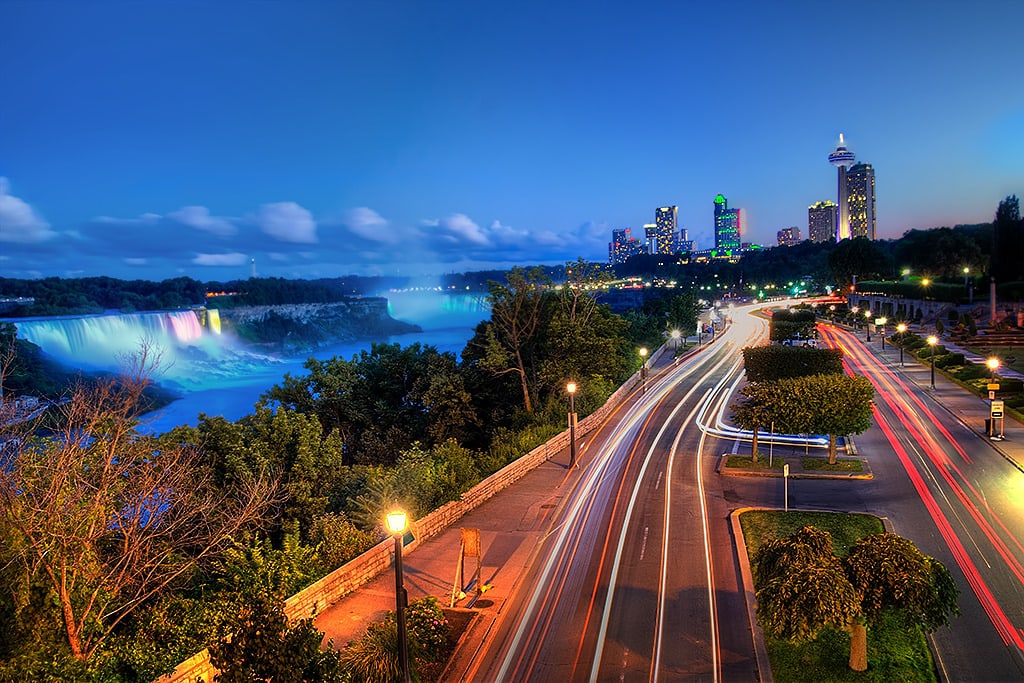
One of the remarkable aspects of the blue hour in urban settings is the wealth of subject matter it offers. From the dazzling cityscapes with their illuminated skyscrapers to the charming streets adorned with the glow of streetlights, there’s no shortage of fascinating scenes to capture.
The juxtaposition of soft, natural twilight and the vibrant city lights can yield captivating images that tell a story of urban life and its tranquil, magical moments.
I find that blue hour in urban surroundings offers more options and a variety of subjects for any photographer.
I encourage you to get out and shoot after the sun has set!
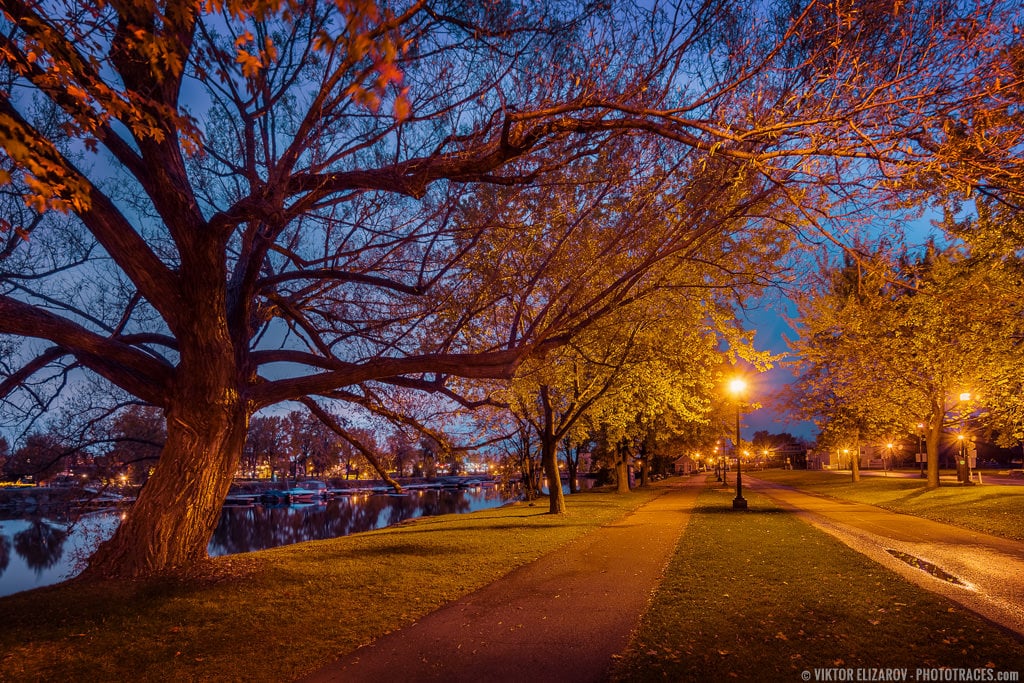
3. Use Contrast Between Urban and Natural Elements
Exploring contrast is a fundamental technique in photography, and it plays a pivotal role in urban landscape photography. The interplay between urban and natural elements offers a captivating source of contrast that is readily available and visually powerful.
Imagine a busy city with its towering skyscrapers, then consider the serene, meandering river that flows at its feet. This contrast between the urban structures and the natural waterway isn’t merely a juxtaposition of elements; it’s a story of coexistence. The man-made and the organic worlds share the same frame, and capturing this contrast can result in striking compositions.
Alternatively, you can create a frame within a frame. Use the elegance of trees or other natural elements to frame the cityscape. The branches and leaves naturally border the concrete structures, guiding the viewer’s attention to the heart of the urban environment. This technique underscores the relationship between urban development and the enduring beauty of nature.
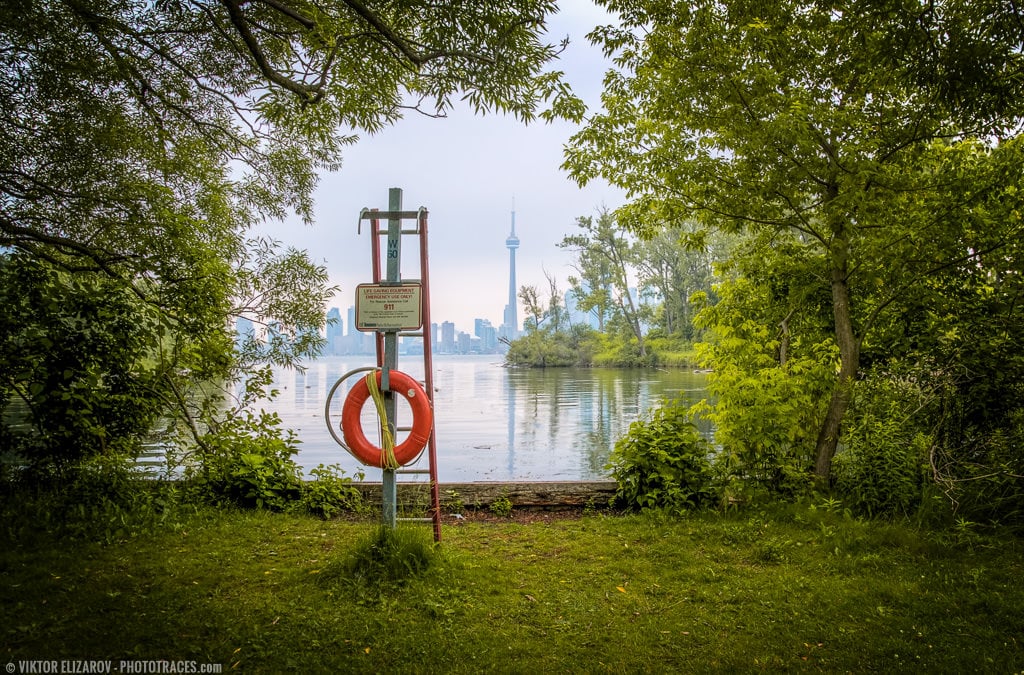
Moreover, directing your lens upwards toward the vast expanse of the sky while subtly incorporating urban elements can establish a sense of balance and contrast. This approach highlights the cohabitation of contrasting worlds and encourages viewers to contemplate the delicate equilibrium between human progress and the unspoiled natural world.
In essence, urban landscape photography thrives on the harmonious interplay of opposing elements, emphasizing the intricate relationship between urbanization and nature.
So, the next time you explore the urban landscape with your camera, seek out these contrasts and allow your photographs to narrate the captivating stories of our world.
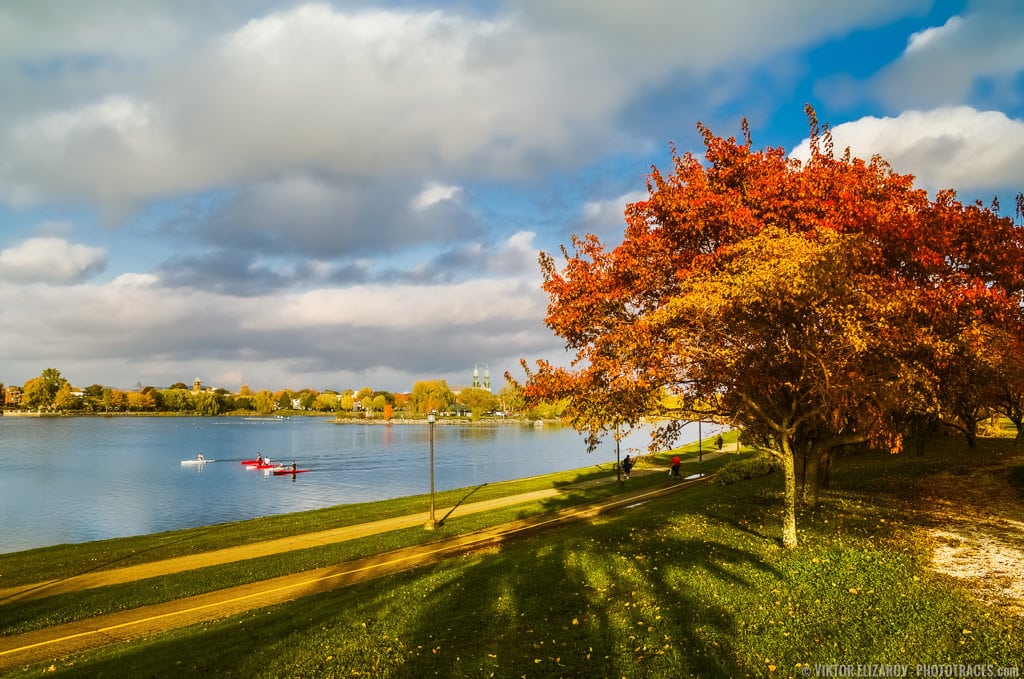
4. Include a Foreground, Middleground, and Background for Depth
In classical (natural) landscape photography, the more depth you create, the better the shot.
In other words:
The best landscape photos often lead the viewer through the scene, going from near to far, until the viewer reaches a resting point off in the distance.
And this is true for urban landscape photography, too.
Just make sure your images include an interesting foreground element to draw the viewer into the scene.
Then a middleground element, to bring the viewer further along.
And finally a background element, such as buildings in the distance, to offer the eye a place to rest.
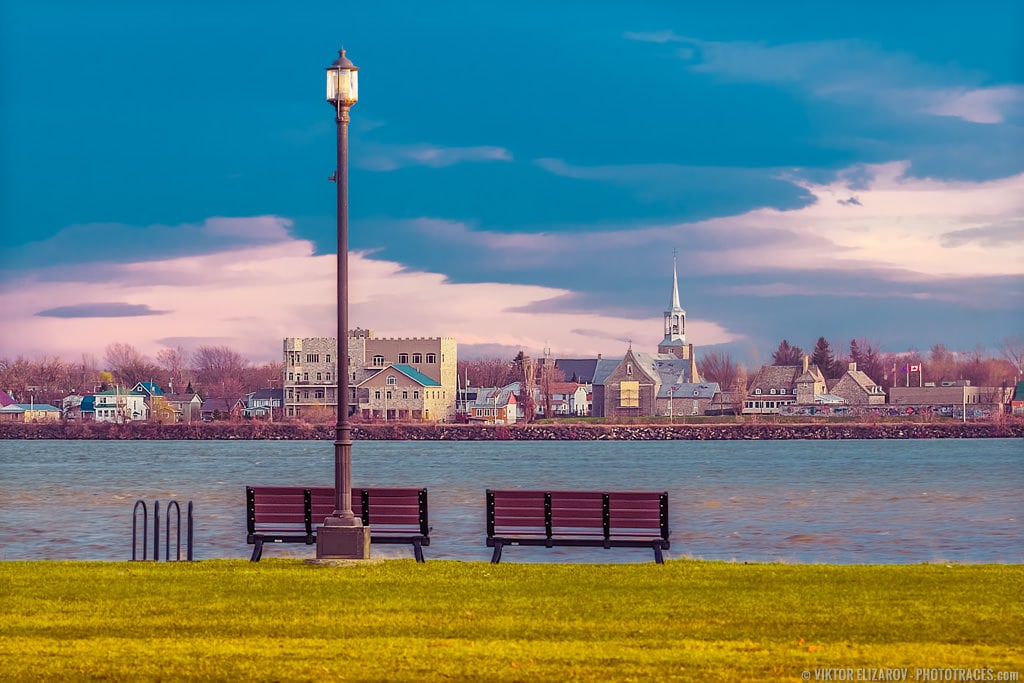
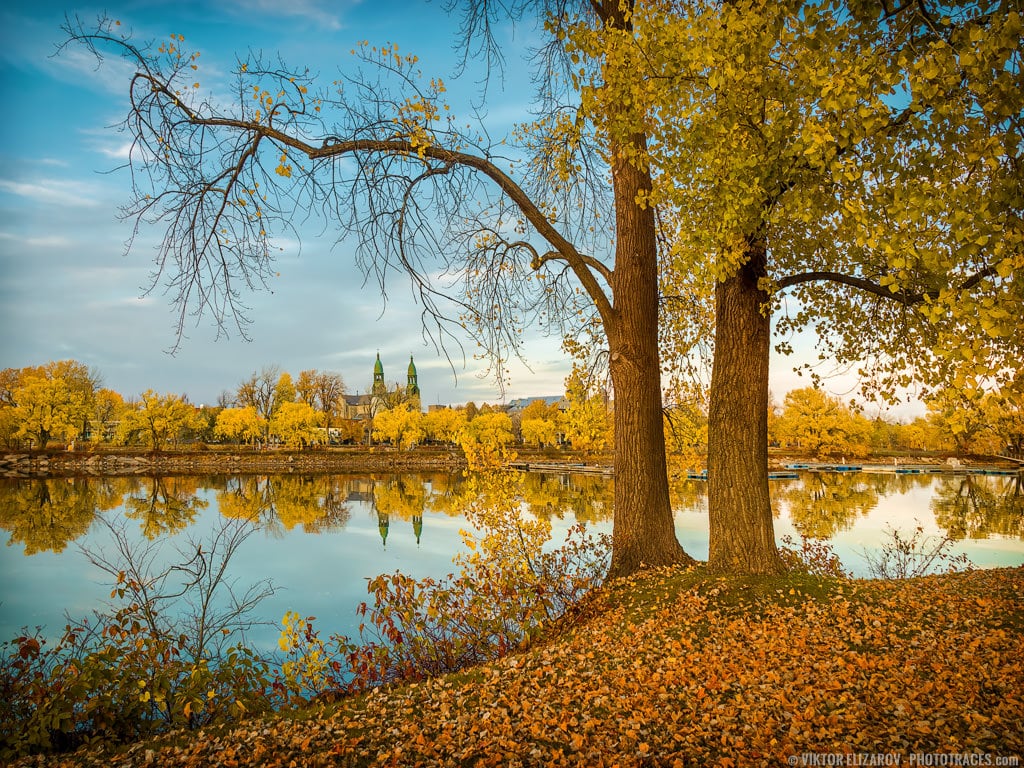
5. Include Leading Lines for Even More Depth
In the previous tip, I explained the importance of adding depth to your urban landscape photos.
And here’s another way to add a lot of depth:
Use leading lines.
Specifically, look for natural or artificial lines in the urban environment, and place them in the foreground of your photo–so that they lead the viewer deep into the scene.
Leading lines are everywhere in cities, even if you have to look for them.
For instance, you can use natural features, such as rivers, streams, and trees, or you can use artificial features, such as streets, bridges, road markings, fences, curbs, or cars; all of these will lead the eye into the frame and keep the viewer interested.
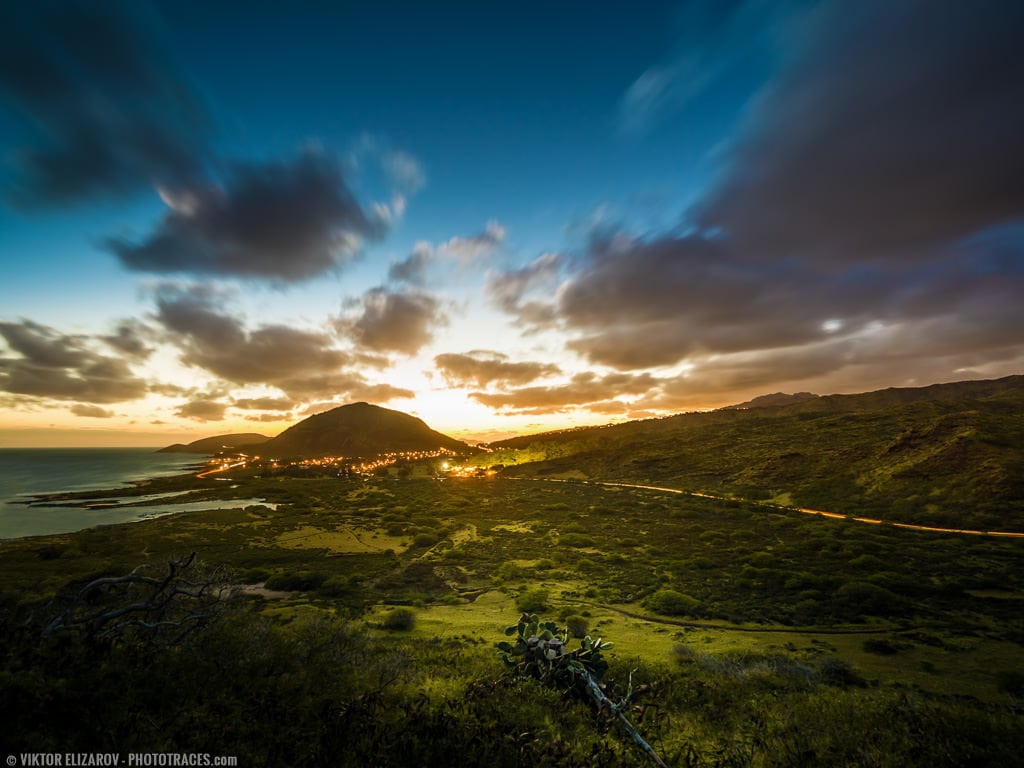
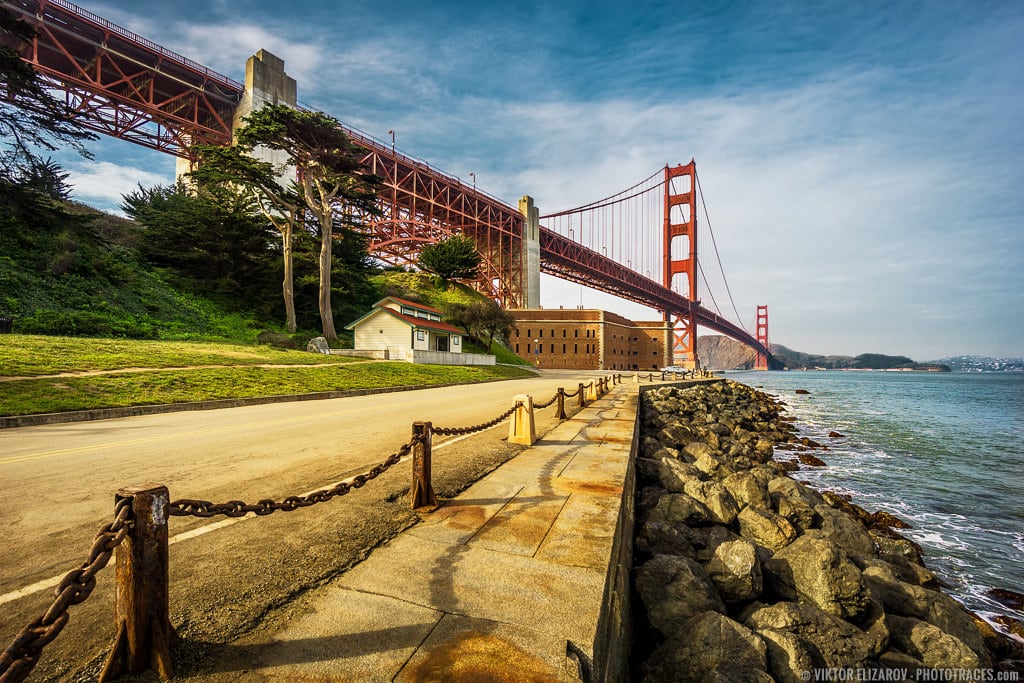
6. Take Advantage of Reflections
In natural landscape photography, reflections in water are often a great way to enhance an image–but they can be difficult to find (i.e., they require very specific conditions).
However, in urban landscape photography, you have so many more opportunities to use reflections.
This is because reflections are everywhere in the urban environment. You can find reflective windows, mirrors, car hoods, metal buildings, and so much more.
So try to include them in your photos; you’ll be amazed at how interesting a simple reflection can be.
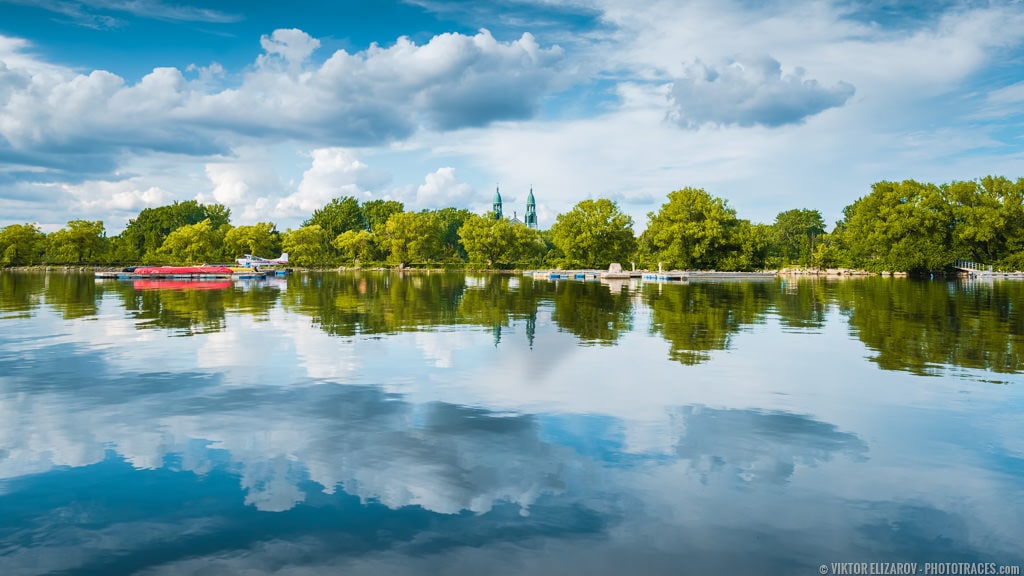
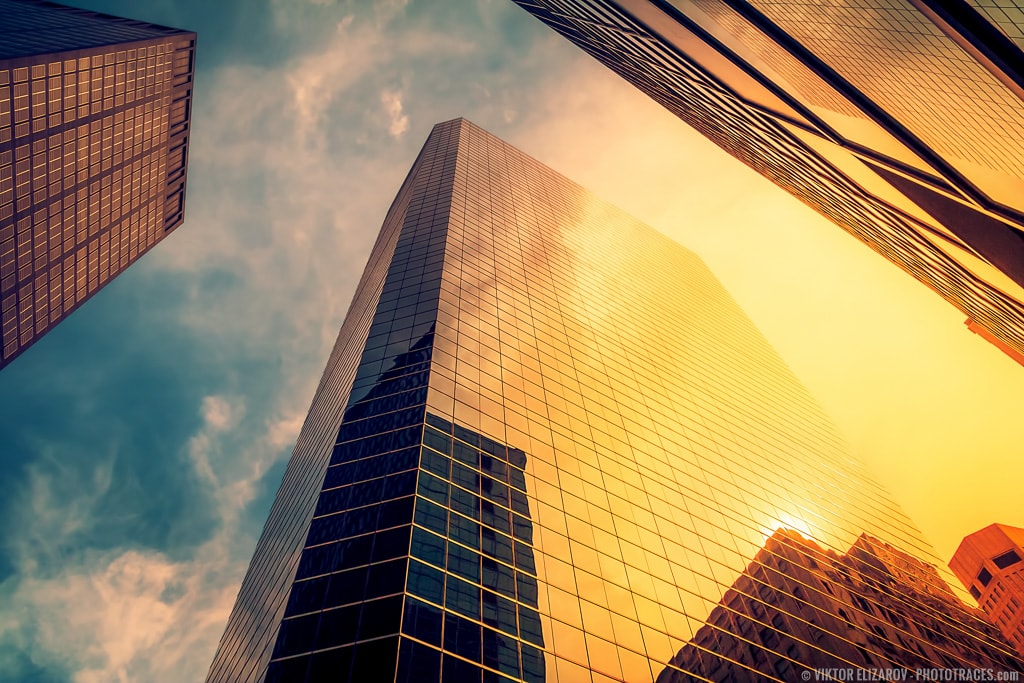
7. Capture Long Exposure Photos of Urban Elements
Here’s another fun urban landscape photography tip for you:
Create long exposure images.
To pull this off, you’ll need a sturdy tripod. You’ll also need a neutral density filter, if you’re shooting during the day–though I do recommend at least testing out some long exposure images at night, because you can get some spectacular shots of light trails, star trails, and more.
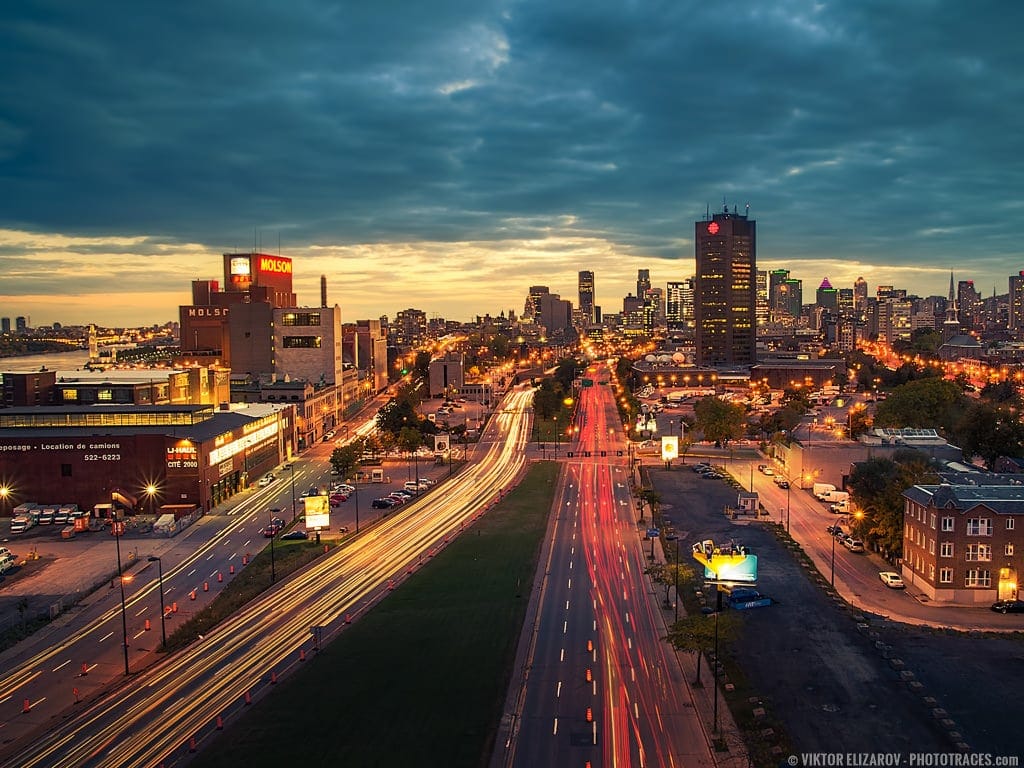
8. Mix and Match for Great Results
At the beginning of this article, I defined urban landscape photography as pulling from several different genres of photography (including street photography and architectural photography).
But it can be a fascinating creative exercise to combine different elements of many genres of photography, including black and white, travel, and more to create unique urban landscape photos.
So don’t feel that you have to restrain yourself; with urban landscape photography, feel free to experiment with different styles and elements from many different photography genres!

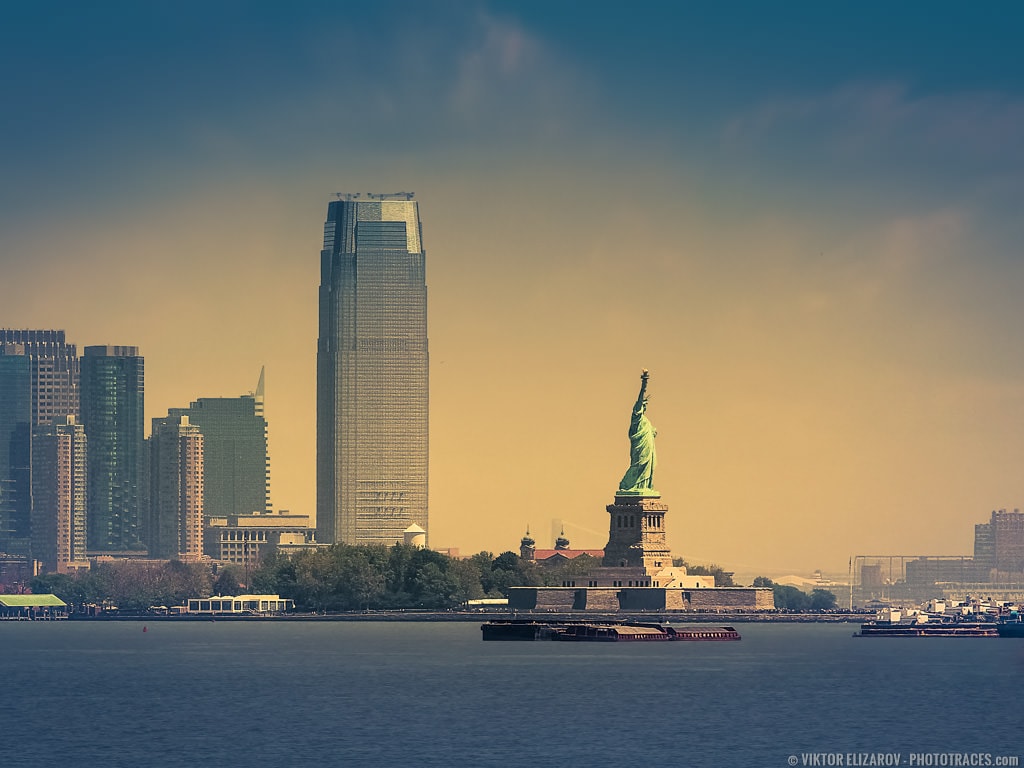
Urban Landscape Photography | Final Thoughts
Urban landscape photography offers opportunities for gorgeous images.
So get out and start shooting! If you remember to apply the tips detailed above, then you’re bound to get great results.

